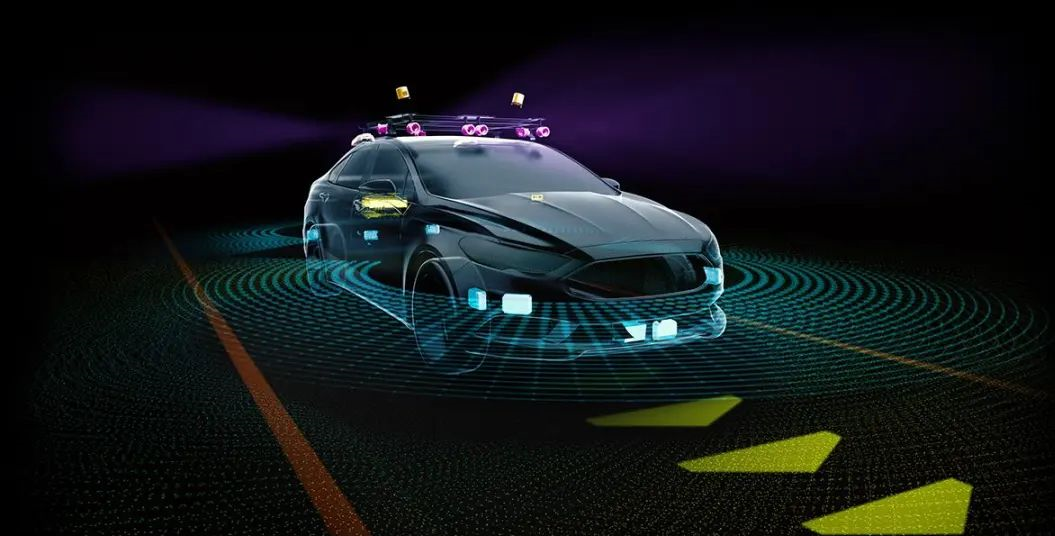Jia Haonan Posted from the Passenger Temple
Intelligent Car Reference | Official Account AI4Auto
The auto industry has been hit by a nuclear bomb!
At the NVIDIA GTC, Huang Renxun presented the most powerful onboard computing platform in history with one hand, and threw an Orin autonomous driving chip into the auto industry with the other hand.
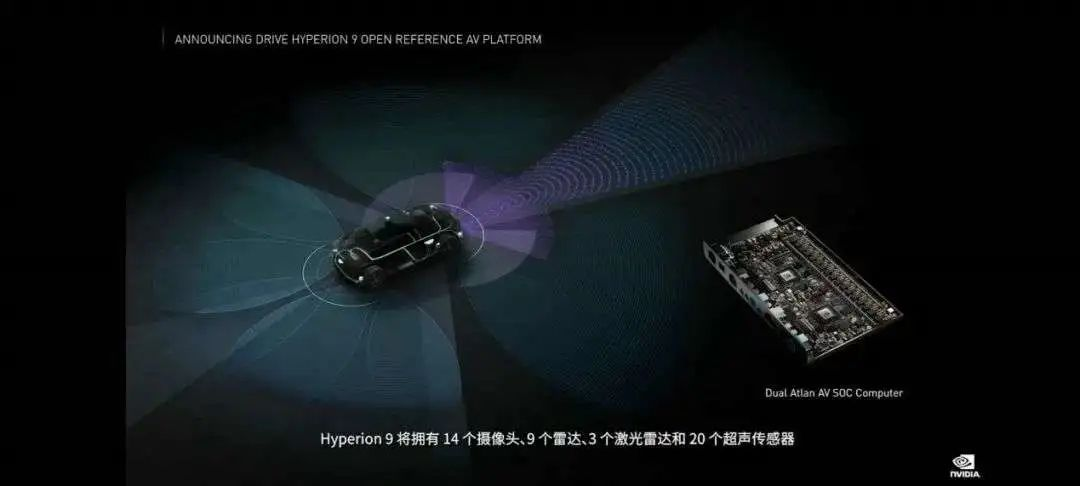
A futures contract that whets the appetite of car companies: Drive Hyperion 9 platform with the highest computing power of 1000 TOPS and a single chip, more than 14 times that of Tesla FSD!
A spot market solution to the pressing needs of car companies: Orin chips, eagerly awaited by car manufacturers, will be mass-produced and delivered within a month. Without this, even the most advanced autonomous driving algorithms cannot operate.
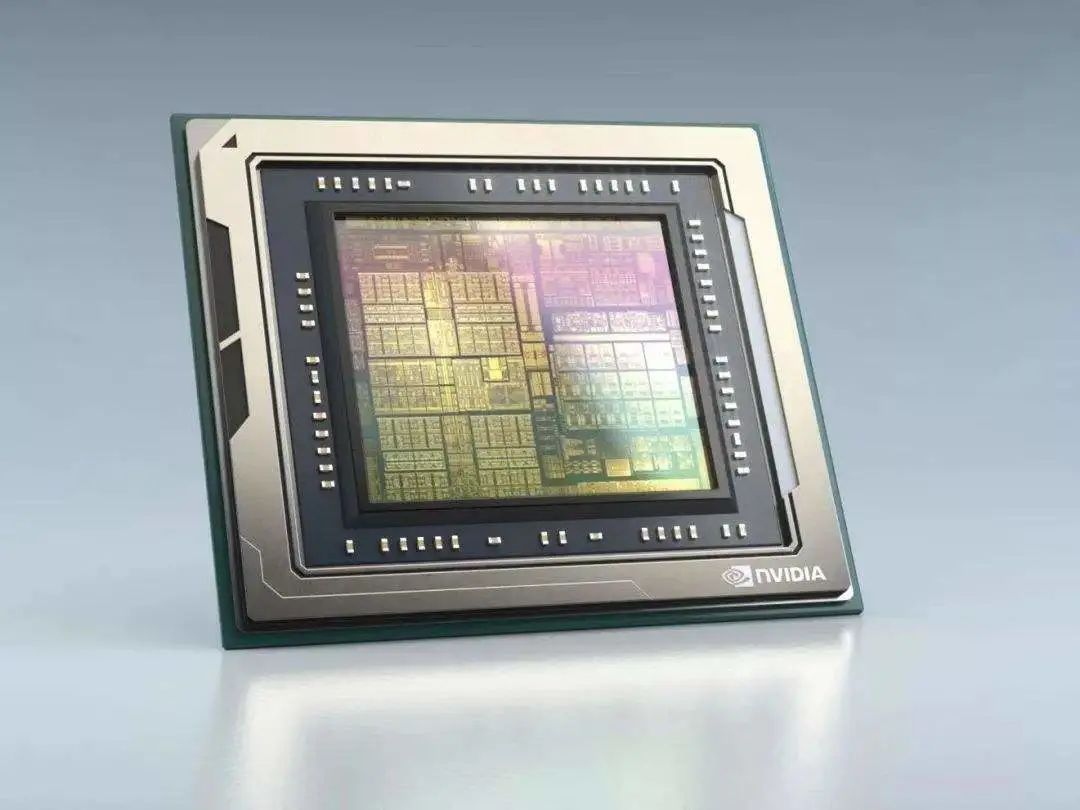
Huang Renxun bluntly states that “chips are the brain of autonomous driving”.
Implicitly stating that “with this autonomous driving solution, car companies can use it without much thought.”
Huang Renxun’s Nuclear Bomb in the Auto Industry
Why does Huang Renxun say that chips are the brain of autonomous driving?
In fact, this is just one of his series of metaphors, which include “cars are the body” and “autonomous driving platforms are the nerves”.
Similar to Huawei’s “Soul Talk”.
And the nuclear bomb that NVIDIA threw into the auto industry is a dual-core weapon of nerves and brain.
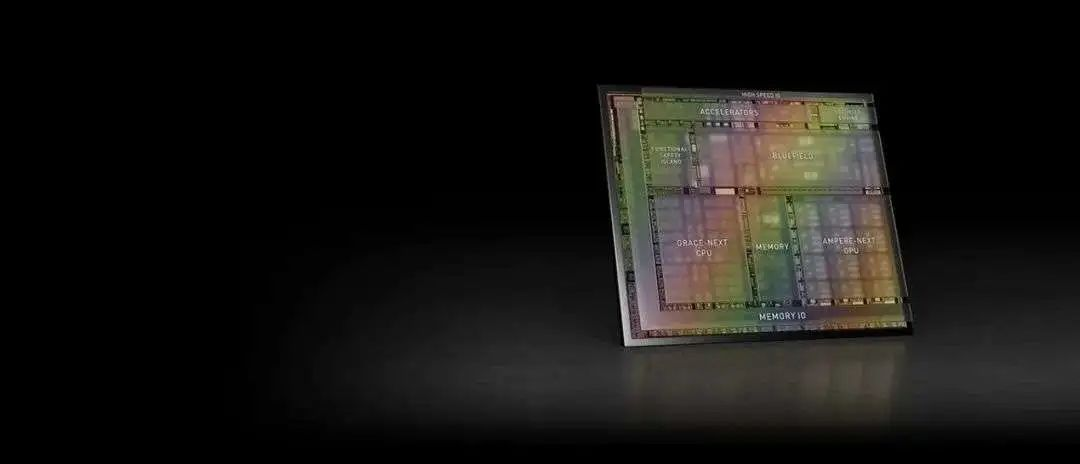
At the product level, Drive Hyperion 9 is an autonomous driving computing platform that includes performing computing tasks, communication lines, data interfaces, and control modules.
Everything related to perception, analysis, decision-making, and task execution with regard to autonomous driving can run on this board.
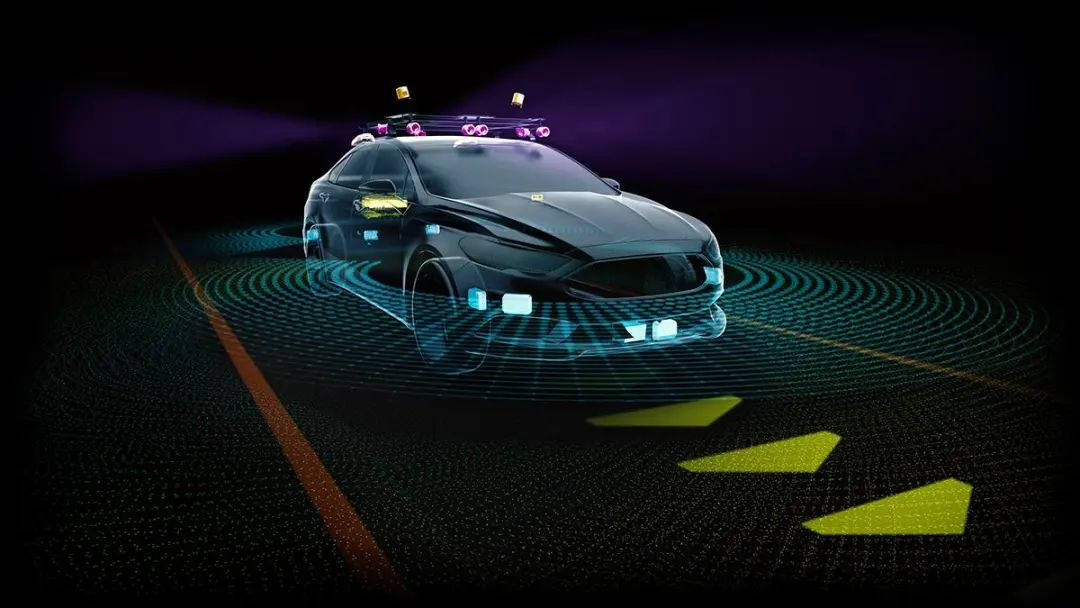
Hyperion 9 is considered the most powerful in history because of its unprecedented support for autonomous driving solutions.
The entire platform can accommodate up to 50 autonomous driving perception components, including 17 cameras, 10 millimeter-wave radars, 3 lidars, and 20 ultrasonic sensors.
This sensor configuration already surpasses that of any existing intelligent car solution.
It is also clear that Drive Hyperion 9 is specifically designed for L3 and above autonomous driving solutions.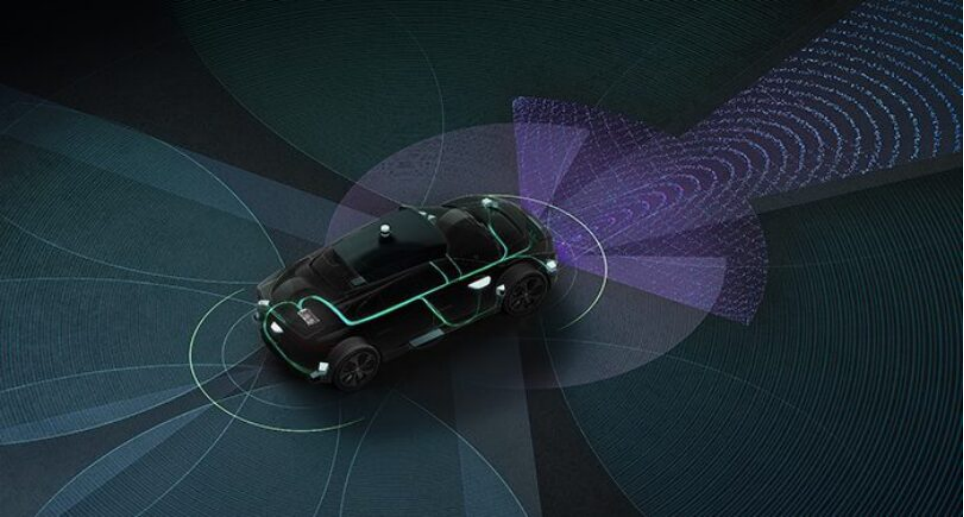
Vehicles equipped with this platform can achieve L3-level autonomous driving and L4-level autonomous parking.
Judging from the sensor configuration, the data generated by the Drive Hyperion 9 platform is definitely huge, especially now that automakers generally prefer 8 million pixel cameras.
What to do?
In the past two years, many newly launched cars have adopted a simple and crude method: if one chip is not powerful enough, then use two. Some even use four Nvidia Orin chips to pile up to 1000T computing power.
But Huang said, Drive Hyperion 9 can be handled by a single chip.
This is the autonomous driving brain supported by “neuron”: the Atlan chip.
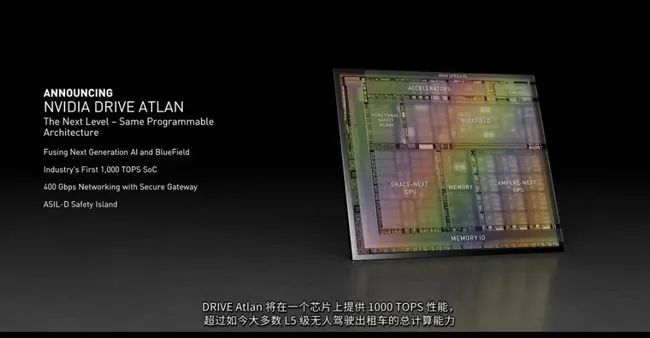
Atlan has made major changes to the overall chip architecture based on the Orin chip, integrating the Grace-Next CPU and Ampere-Next GPU units on one chip.
In addition, Atlan also integrates the Bluefield data processing unit (DPU) for the first time, which helps AI computing and strengthens autonomous driving capabilities.
Although Nvidia has not yet announced the specific core parameters of each module, the target computing power of the Atlan chip is 1000 TOPS, while the computing power level of the Orin chip is 254 TOPS, which has been improved by about 3 times.
The FSD chip, self-developed by Tesla, is manufactured on a 14 nm process and has a maximum computing power of 73.7 TOPS.
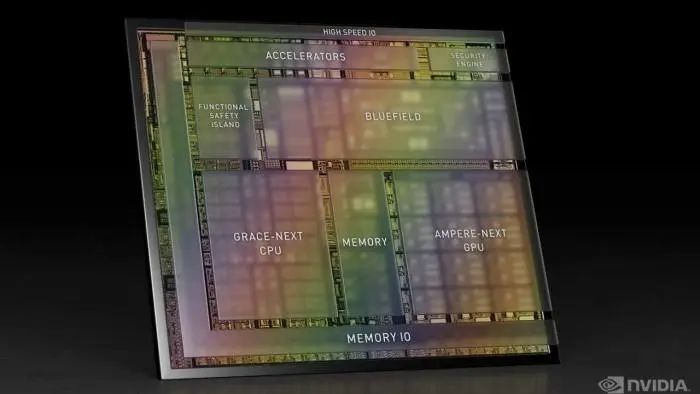
Atlan chip was unveiled at the GTC conference last year, but it was not equipped with a ready-made autonomous driving solution like the Orin chip. The Drive Hyperion 9 platform complements this.
When can I get in the car?
Huang’s schedule is: trial production in 2023, handed over to automakers for testing. Mass production and entry into vehicles will not be possible until at least 2025, and 2026 is also possible.
Okay, Huang has given the automakers a cake that is four years away.
But for now, Huang still takes care of the automakers’ urgent matters.
Nvidia promises: Orin will not postpone, automakers do not panic
Automakers do not panic, Huang is helping you.
Under the impact of the epidemic and unexpected events, the automotive industry supply chain has not been easy since last year.Since the release of NVIDIA’s Orin chip, there have been concerns about delayed delivery. However, Nvidia’s CEO Jensen Huang has just confirmed that Orin has officially entered mass production and is now available for purchase. Orin is a dedicated chip for autonomous driving that was released in 2019 and went on sale this year. It uses 7nm production technology and has a maximum computing power of up to 254 TOPS. Compared with the previous generation, the Xavier system-level chip, Orin’s computing performance has increased 7-fold while only consuming 45w in power. At this point in time, the computing power of Orin’s competitors, Mobileye and Huawei, remains at dozens of TOPS. Qualcomm’s Ride, which has performance parameters similar to Orin, will not be available until 2023. In other words, Orin is currently the best autonomous driving chip available for automakers worldwide.
As a result, many automakers are eagerly awaiting the mass production of Orin chips for their vehicles, including NIO’s ET7 and ET5, XPeng Motors’ P5, P7, and G9, LI’s L9, WM Motor’s M7, SAIC IM, and RisingAuto motors, among many others. It is said that NIO and XPeng have signed priority delivery agreements with Nvidia, but Nvidia does not assume any responsibility for quality control. The automakers’ urgent demand for autonomous driving chips is evident.
In addition to the automakers mentioned above, Nvidia’s GTC conference has just announced a heavyweight partner: BYD. In 2023, BYD will start mass production of vehicles equipped with the DRIVE Orin computing platform. According to BYD’s product plan, the model expected to be launched with the new platform could be a high-end brand that has not yet been released. Other familiar names among the new partners announced at the GTC conference include Lucid, Momenta, Element Analytics, Yunji, Outrider, and UpRun. Nvidia’s customers fall into three categories: first, the new emerging automakers, such as NIO, XPeng, Lucid Group; second, traditional automakers, including BYD, Mercedes-Benz, Volkswagen, and SAIC, among others.Below is the translated Markdown text in English, with HTML tags preserved:
The last is autonomous driving companies, and currently most autonomous driving R&D is using NVIDIA chips.
Cruise, Zoox, DiDi, TuSimple, DeepBlue Technology, AutoX, Pony.ai…
According to the official statement from NVIDIA, more than 25 customers have already chosen NVIDIA. These partners will contribute over 11 billion US dollars in revenue to NVIDIA in the next 6 years.
Although the proportion of autonomous driving in NVIDIA’s total revenue of nearly 30 billion US dollars per year is still small, the growth potential is huge.
After all, the wave of intelligent vehicle has just begun, and the vast majority of the existing automobile market is actually the potential business of NVIDIA.
This is also why every year at GTC, CEO Jensen Huang will take time to introduce autonomous driving business, and his iconic leather jacket can often be seen at other automakers’ autonomous driving conferences as well.
The bustling scene at NVIDIA’s door also reflects how strong the demand for chips is in the current intelligent automobile industry.
And the performance of the computing platform and chip computing power may replace the traditional power parameters of automobiles, and become one of the most important evaluation criteria for intelligent vehicles.
Well, that’s all the important information about autonomous driving and intelligent vehicles at NVIDIA’s GTC.
However, the field of intelligent vehicle chips is far more than just NVIDIA and autonomous driving – there are many more subcategories and countless players eager to jump in.
If you’re interested in learning more, feel free to leave a comment and let us know, and we will do our best to cover it in the next article.
— The End —
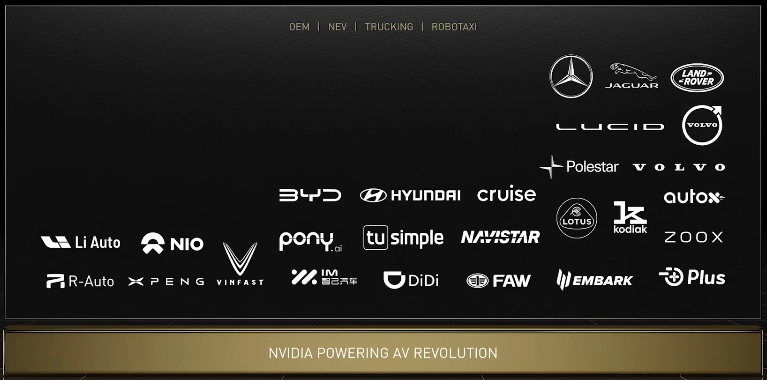
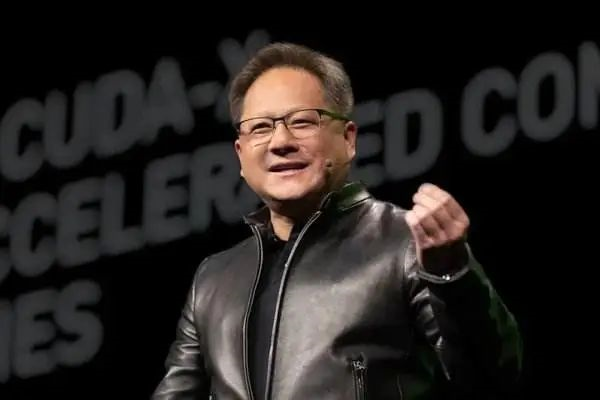
This article is a translation by ChatGPT of a Chinese report from 42HOW. If you have any questions about it, please email bd@42how.com.
